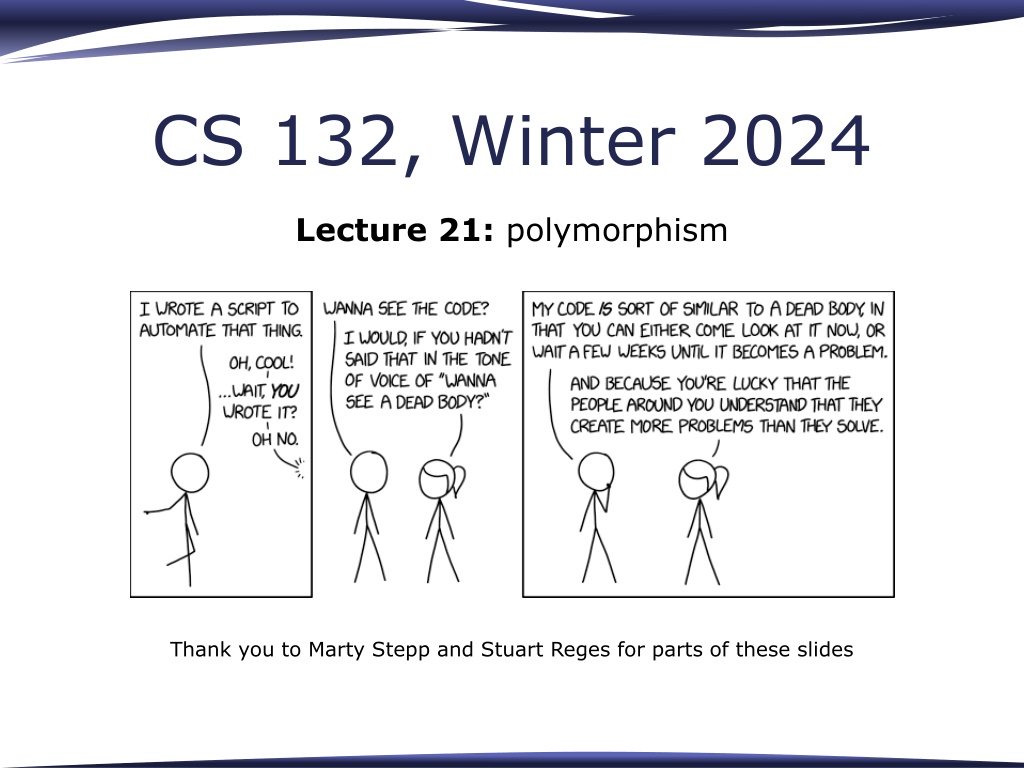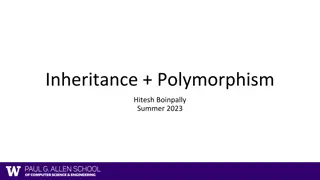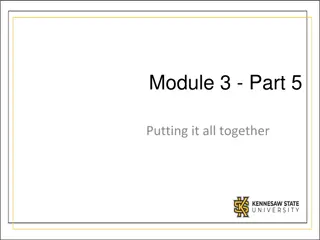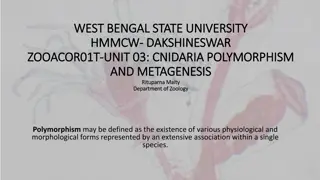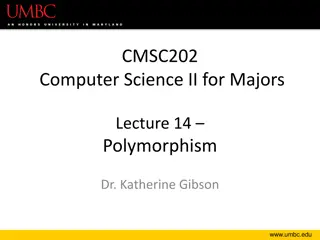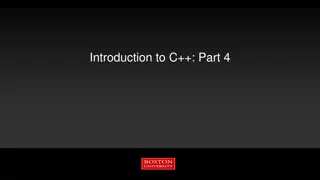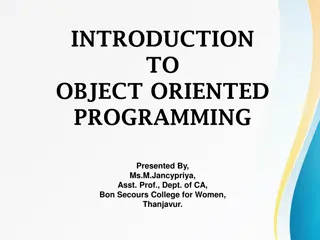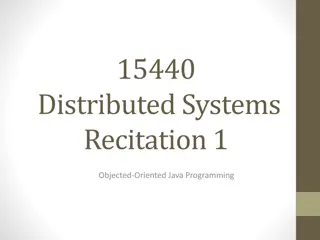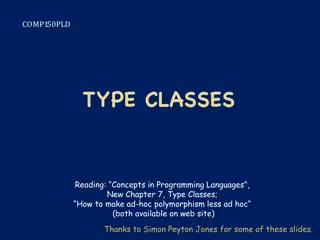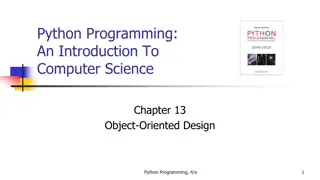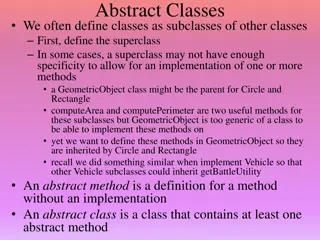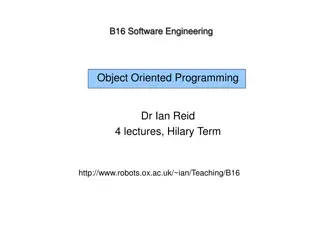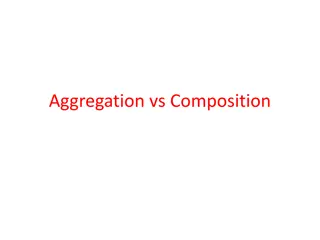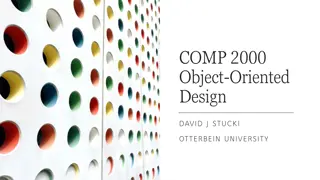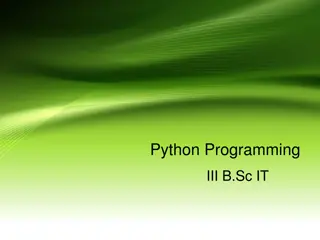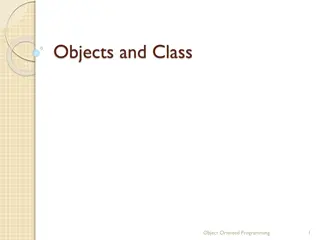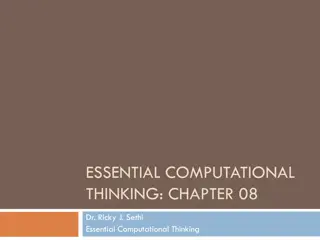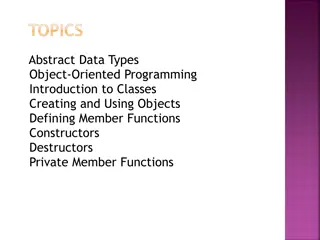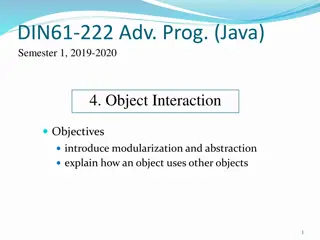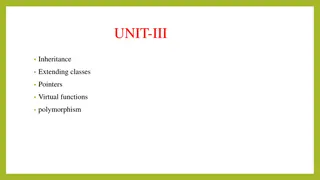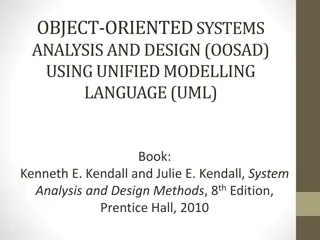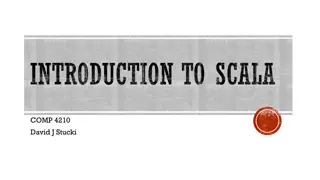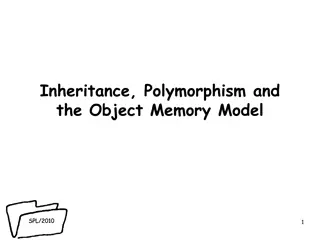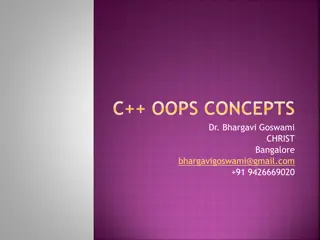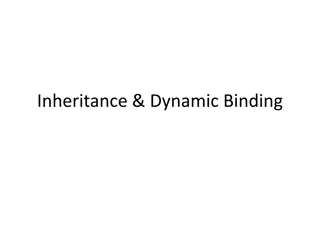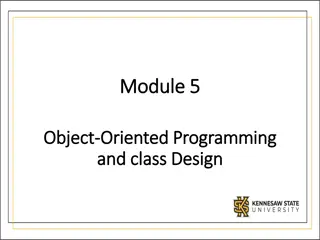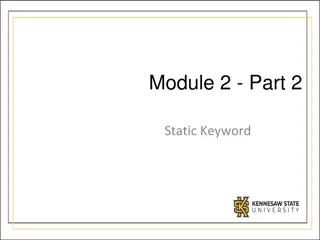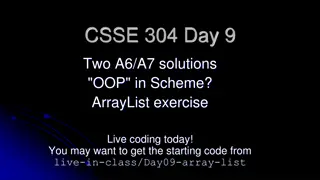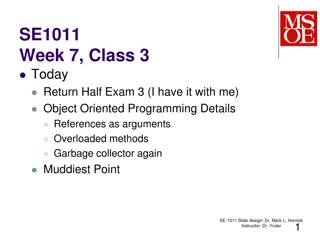Understanding Polymorphism in Object-Oriented Programming
Polymorphism in programming allows the same code to work with different types of objects, behaving differently based on their specific types. This concept can be achieved through templates for compile-time polymorphism and inheritance for run-time polymorphism. Through examples involving pointers and member functions, the concept of polymorphism is explored, showcasing how different subclasses can exhibit unique behaviors. Diagrams are used to illustrate the relationships among classes in the context of polymorphism.
Download Presentation

Please find below an Image/Link to download the presentation.
The content on the website is provided AS IS for your information and personal use only. It may not be sold, licensed, or shared on other websites without obtaining consent from the author. Download presentation by click this link. If you encounter any issues during the download, it is possible that the publisher has removed the file from their server.
E N D
Presentation Transcript
CS 132, Winter 2024 Lecture 21: polymorphism Thank you to Marty Stepp and Stuart Reges for parts of these slides
Polymorphism polymorphism: Ability for the same code to be used with different types of objects and behave differently with each. Templates provide compile-time polymorphism. Inheritance provides run-time polymorphism. Idea: Client code can call a member function on different kinds of objects, and the resulting behavior will be different. 2
Polymorphism and pointers A pointer of type T can point to any subclass of T. Employee* edna = new Lawyer("Edna", "Harvard", 5); Secretary* steve = new LegalSecretary("Steve", 2); World* world = new WorldMap("map-stanford.txt"); When a member function is called on edna, it behaves as a Lawyer. (This is because the employee functions are declared virtual.) You can not call any Lawyer-only members on edna (e.g. sue). You can not call any LegalSecretary-only members on steve (e.g. fileLegalBriefs). 3
"Polymorphism mystery" class Snow { public: virtual void method2() { cout << "Snow 2" << endl; } virtual void method3() { cout << "Snow 3" << endl; } }; class Rain : public Snow { public: virtual void method1() { cout << "Rain 1" << endl; } virtual void method2() { cout << "Rain 2" << endl; } }; 4
"Polymorphism mystery" class Sleet : public Snow { public: virtual void method2() { cout << "Sleet 2" << endl; Snow::method2(); } virtual void method3() { cout << "Sleet 3" << endl; } }; class Fog : public Sleet { public: virtual void method1() { cout << "Fog 1" << endl; } virtual void method3() { cout << "Fog 3" << endl; } }; 5
Diagramming classes Draw a diagram of the classes from top (superclass) to bottom. Snow Snow 2 Snow 3 method2 method3 Rain Sleet Rain 1 Rain 2 Snow 3 Sleet 2 / Snow 2 Sleet 3 method1 method2 (method3) method2 method3 Fog Fog 1 method1 (method2) method3 Sleet 2 / Snow 2 Fog 3 6
Mystery problem Snow* var1 = new Sleet(); var1->method2(); // What's the output? To find the behavior/output of calls like the one above: 1. Look at the variable's type. If that type does not have that member: COMPILER ERROR. Execute the member. Since the member is virtual: behave like the object's type, not like the variable's type. 2. 7
Example 1 Q: What is the result of the following call? variable Snow Snow* var1 = new Sleet(); var1->method2(); Snow 2 Snow 3 method2 method3 A. Snow 2 B. Rain 2 object Rain Sleet Rain 1 Rain 2 Snow 3 Sleet2/Snow2 Sleet 3 method1 method2 (method3) method2 method3 C. Sleet 2 Snow 2 Fog D. COMPILER ERROR Fog 1 method1 (method2) method3 Sleet2/Snow2 Fog 3 8
Example 2 Q: What is the result of the following call? variable Snow Snow* var2 = new Rain(); var2->method1(); Snow 2 Snow 3 method2 method3 A. Snow 1 B. Rain 1 object Rain Sleet Rain 1 Rain 2 Snow 3 Sleet2/Snow2 Sleet 3 method1 method2 (method3) method2 method3 C. Snow 1 Rain 1 Fog D. COMPILER ERROR Fog 1 method1 (method2) method3 Sleet2/Snow2 Fog 3 9
Example 3 Q: What is the result of the following call? variable Snow Snow* var3 = new Rain(); var3->method2(); Snow 2 Snow 3 method2 method3 A. Snow 2 B. Rain 2 object Rain Sleet Rain 1 Rain 2 Snow 3 Sleet2/Snow2 Sleet 3 method1 method2 (method3) method2 method3 C. Sleet 2 Snow 2 Fog D. COMPILER ERROR Fog 1 method1 (method2) method3 Sleet2/Snow2 Fog 3 10
Mystery with type cast Snow* var4 = new Rain(); ((Sleet*) var4)->method1(); // What's the output? If the mystery problem has a type cast, then: 1. Look at the cast type. If that type does not have the method: COMPILER ERROR. (Note: If the object's type were not equal to or a subclass of the cast type, the code would CRASH / have unpredictable behavior.) Execute the member. Since the member is virtual, behave like the object's type. 2. 11
Example 4 Q: What is the output of the following call? variable Snow Snow* var4 = new Rain(); ((Rain*) var4)->method1(); Snow 2 Snow 3 method2 method3 cast object A. Snow 1 B. Rain 1 Rain Sleet Rain 1 Rain 2 Snow 3 Sleet2/Snow2 Sleet 3 method1 method2 (method3) method2 method3 C. Sleet 1 D. COMPILER ERROR Fog Fog 1 method1 (method2) method3 Sleet2/Snow2 Fog 3 12
Example 5 Q: What is the output of the following call? variable Snow Snow* var5 = new Fog(); ((Sleet*) var5)->method1(); Snow 2 Snow 3 method2 method3 A. Snow 1 B. Sleet 1 cast Rain Sleet Rain 1 Rain 2 Snow 3 Sleet2/Snow2 Sleet 3 method1 method2 (method3) method2 method3 C. Fog 1 D. COMPILER ERROR object Fog Fog 1 method1 (method2) method3 Sleet2/Snow2 Fog 3 13
Example 6 Suppose we add the following method to base class Snow: virtual void method4() { cout << "Snow 4" << endl; method2(); } variable Snow Snow 2 Snow 3 method2 method3 What is the output? Snow* var8 = new Sleet(); var8->method4(); object Rain Sleet Rain 1 Rain 2 Snow 3 Sleet2/Snow2 Sleet 3 method1 method2 (method3) method2 method3 Answer: Snow 4 Sleet 2 Snow 2 (Sleet's method2 is used because method4 and method2 are virtual.) Fog Fog 1 method1 (method2) method3 Sleet2/Snow2 Fog 3 14
Example 7 Q: What is the output of the following call? variable Snow Snow* var6 = new Sleet(); ((Rain*) var6)->method1(); Snow 2 Snow 3 method2 method3 A. Snow 1 B. Sleet 1 cast object Rain Sleet Rain 1 Rain 2 Snow 3 Sleet2/Snow2 Sleet 3 method1 method2 (method3) method2 method3 C. Fog 1 D. COMPILER ERROR Fog E. CRASH Fog 1 method1 (method2) method3 Sleet2/Snow2 Fog 3 15
Pure virtual functions virtual returntype name(params) = 0; pure virtual function: Declared in superclass's .h file and set to 0 (null). An absent function that has not been implemented. Must be implemented by any subclass, or it cannot be used. A way of forcing subclasses to add certain important behavior. class Employee { ... virtual void work() = 0; // every employee does // some kind of work }; FYI: In Java, this is called an abstract method. 16
Pure virtual base class pure virtual base class: One where every member function is declared as pure virtual. (Also usually has no member variables.) Essentially not a superclass in terms of inheriting useful code. But useful as a list of requirements for subclasses to implement. Example: Demand that all shapes have an area, perimeter, # sides, ... class Shape { // pure virtual class; extend me! virtual double area() const = 0; virtual double perimeter() const = 0; virtual int sides() const = 0; }; FYI: In Java, this is called an interface. 17
Multiple inheritance class Name : public Superclass1, public Superclass2, ... multiple inheritance: When one subclass has multiple superclasses. Forbidden in many OO languages (e.g. Java) but allowed in C++. Convenient because it allows code sharing from multiple sources. Can be confusing or buggy, e.g. when both superclasses define a member with the same name. Example: The C++ I/O streams use multiple inheritance: 18
